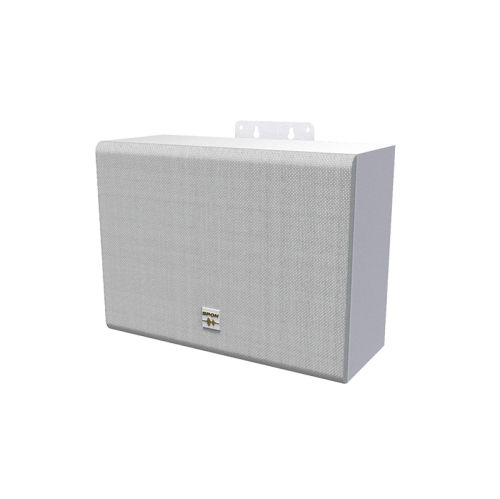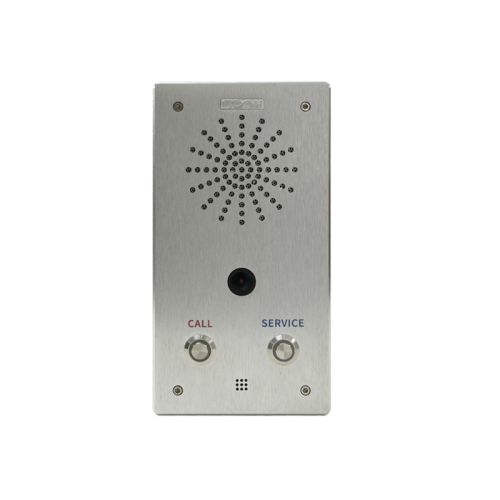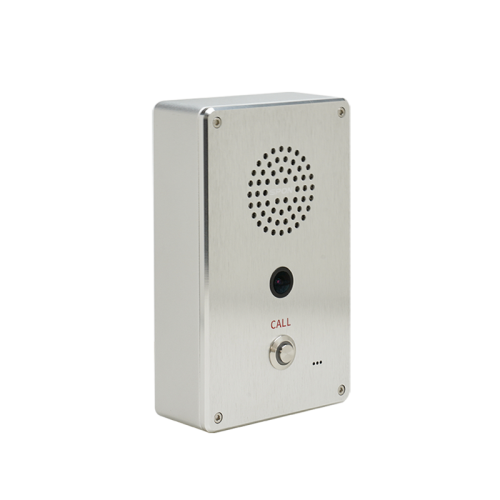SPON Communications: Blazing A Trail in Cutting-edge IP PA System Designs
SPON Communications: Blazing A Trail in Cutting-edge IP PA System Designs
Blog Article
Comprehensive Overview to Public Address Systems
Public address (PA) systems are typically encountered in various tasks such as office complex, domestic facilities, business office structures, schools, health centers, train stations, flight terminals, bus factories, financial institutions, and terminals - SPON Communications. This guide will certainly offer a thorough overview of PA systems

Parts of a System
No matter the kind of PA system, it usually is composed of four almosts all: resource equipment, signal boosting and processing devices, transmission lines, and speaker systems.
Resource Devices
Music Gamers: Made use of for background songs.
Microphones: Includes typical microphones and zone-select microphones.
Voice Storage Instruments: For saving business and emergency situation program messages.
Signal Processing and Amplification Equipment
Audio Signal Cpu: Deals with audio signal compensation, attenuation, equalization, and so on.
Pre-Amplifier: Pre-amplifies sound signals.
Power Amplifier: Enhances audio signals to drive speakers, offering continuous voltage outcome.
Transmission Lines
The solution monitoring system software program permits the monitoring center to exert central governance over the broadcast and intercom communication systems. It facilitates real-time gadget condition monitoring, mistake medical diagnosis, and troubleshooting, solidifying system dependability and uniformity.
Audio speakers
Ceiling Audio Speakers: Indoor, flush-mounted in the ceiling, consistent voltage or constant insusceptibility.
Wall-Mounted Speakers: Wall-mounted, continuous voltage or continuous resistance.
Column Speakers: Free-standing, ideal for interior or exterior usage.
Horn Audio speakers: High sensitivity, suitable for outside or indoor use.
Camouflaged Speakers: For exterior setups like parks or gardens, made to resemble rocks, stumps, or mushrooms.
Sound Technical Requirements of PA Systems
In daily settings, common sound stress levels are:.
• Office noise: 50-60 dB.
• Regular conversation: 65-70 dB.
• Fabric manufacturing facility sound: 110-120 dB.
• Little quality shooting: 130-140 dB.
• Big jet aircraft sound: 150-160 dB.
Signal-to-Noise Proportion (SNR)
SNR gauges the proportion of the signal voltage to noise voltage, revealed in decibels. A greater SNR shows much less sound and much better audio top quality. Typically, SNR should be at least 63 dB, with high-fidelity audio speakers getting to over 110 dB.
Input Level of sensitivity
This is the minimum input voltage required to attain the rated result power. Greater level of sensitivity implies less input signal is required. Typically, power amplifiers have an input level of sensitivity of 0.775 V (0 dB) to 1.5 V (+6 dB).
Maximum Result Power (Audio Speakers)
The maximum power a speaker can deal with in other words ruptureds without damages.
Rated Power (Audio Speakers)
.
The continuous power a speaker can deal with without distortion, determined in watts (W) Rated power is an ordinary worth, and speakers can manage peak power up to 2-3 times the rated power.
Constant Voltage vs. Constant Resistance Outputs
Continuous Voltage (70V or 100V)
Utilizes voltage to drive audio speakers, enabling longer transmission ranges and numerous speakers in parallel. Audio quality is slightly inferior contrasted to constant insusceptibility systems.
Power amplifiers must match the voltage score of the speakers to prevent damages.
Continuous Impedance.
Makes use of existing to drive audio speakers, supplying better sound high quality but minimal transmission range (up to 100 meters)
Insusceptibility matching is essential; for instance, an 8Ω amplifier need to be matched with 8Ω audio speakers.
Choose and Configuring Speakers
Speaker Option
Indoor Spaces with Ceiling: Usage flush-mounted ceiling speakers without a rear cover.
Indoor Spaces with Only a Structure: Usage ceiling speakers with rear covers or hanging ball-type audio speakers.
Outside Areas: Usage weatherproof column audio speakers or horn speakers.
Parks and Gardens: Usage camouflaged speakers made for aesthetic purposes.
High-End Interiors: Usage sophisticated dangling audio speakers.
Fire-Safe Locations: Use fireproof speakers with closed designs.
Audio speaker Configuration
Audio speakers should be dispersed equally throughout the service location to make sure a signal-to-noise ratio of at the very least 15 dB. Regular history sound degrees and recommended speaker positioning are:.
Premium office passages: 48-52 dB.
Big shopping malls: 58-63 dB.
Active road areas: 70-75 dB.
Speakers should be placed to make certain a sound stress level of 80-85 dB in many atmospheres. Ceiling speakers should be spaced 5-8 meters apart, or 8-12 meters for history songs just. For emergency programs, guarantee that no area is greater than 15 meters from the nearby speaker.
Amplifier Sizing
Calculation Approach:
For service and organization PA systems: P= K1 × K2 × ΣPo where:.
P = Overall amplifier result power (W)
K1 = Line loss compensation aspect.
K2 = Aging factor (1.2-1.4)
ΣPo = Complete power need.
For emergency alarm systems, use 1.5 times the total number of speakers.
Example Computation:
For a history music system with 10 audio speakers at 20W each: P= 1.26 × 1.2 × 10 × 20W × 0.7= 211W.
Last amplifier ability ought to be 1.3 times this worth: 211W × 1.3= 274W
Installation Demands
Audio speaker Placement
Speakers need to be evenly and purposefully dispersed to fulfill coverage and sound top quality demands
Power Supply
Small PA systems can make use of routine power electrical outlets, while systems over 500W need a dedicated power supply. Power must be steady, with automated voltage regulatory authorities if required. The power supply need to be 1.5-2 times the devices's power intake
Cable and Conduit Installation
Usage copper-core cable televisions for signal transmission. Cords ought to be protected and routed with appropriate channels, staying clear of disturbance from electrical lines. Make certain proper separation between power and signal lines.
Lightning Defense and Grounding
PA systems require appropriate grounding to avoid damage from lightning and electric disturbance. Usage devoted basing for tools and guarantee all basing measures fulfill safety standards
Setup Top quality
Wire and Connector Quality
Use top quality cable televisions and ports. Guarantee links are safe and secure and correctly matched to avoid signal loss or disturbance.
Audio speaker Connections
Preserve proper phase positioning between audio speakers. Usage reliable methods for linking wires, such as soldering or terminal blocks, and shield connections from environmental damage.
Grounding and Safety And Security Checks
Validate all grounding is correctly installed and examine the safety and security of power links and tools setups. Do detailed examinations before completing the installment.
Checking and Adjustment
Examine the whole system to guarantee all components work appropriately and fulfill layout requirements. Adjust setups as needed for optimum efficiency.
Workmanship Demands for Public Address Systems
Construction Top Quality Demands
The top quality of building in a public address (PA) system task is vital to fulfilling layout specifications and individual demands. It is important to purely comply with the design plans, stick to standards, prevent rework and delays, and preserve thorough construction logs. Key locations to focus on consist of:
Wire Choice and Installment
Throughout the construction of a system, interest is usually focused on equipment, yet the choice of transmission cords is additionally important for achieving acceptable sound quality. High-grade IP Paging System broadcasting equipment (amplifiers, audio speakers, and so on) is essential, but the high quality of the transmission cables likewise impacts audio quality.
Parallel speaker wires have fundamental capacitance in between the cables, which is not suitable for long-distance transmission as it can undermine high regularities and create vague or muffled high audios. Twisted pair cables can properly overcome this issue and should be used for long-distance transmission.
Secured twisted set cords protect against electromagnetic interference and boost cord toughness, making them ideal for long-distance setups. Thicker cable televisions decrease transmission loss yet increase price and setup problem.
Usage balanced links for all signal links between PA system tools, with soldered endpoints.
For systems with smoke alarm functions, make use of flame-retardant or fireproof copper-core wires.
Cords ought to be transmitted through steel channels or wire trays, and need to not share trays with lights or power lines. When splicing is essential, utilize specialized adapters and leave appropriate wire length at both ends with clear irreversible markings.

Attaching Speakers and Broadcast Lines
When connecting audio tools, it's important to make certain stage uniformity in between speakers and broadcast lines. Phase interference between speakers can cause considerable variants in sound stress levels, leading to uneven audio distribution. Stick purely to circuitry tags and standardized link approaches.
3 common connection approaches in PA systems are:.
Turning Method: Removing insulation from cables, turning them with each other, and safeguarding them with tape or clamps. This approach is basic however may weaken over time.
Screw Terminal Approach: Removing insulation and placing wires right into screw terminals, then tightening up the screws. This method is commonly utilized.
Soldering Technique: Stripping insulation, turning cables, and soldering them with each other, after that covering with tape. This approach is a lot more suitable and trustworthy for high-demand or moist atmospheres.
Regardless of the technique, use tinned cord to promote soldering and stop rust. Usage PVC or metal conduit to safeguard exposed cords from junction boxes to audio speakers.
System Grounding
The PA control area must have both protective and operational grounding. To minimize disturbance from the power system, different protective and functional groundings ought to be developed. Suggested practice is to set up separate copper strips for weak and solid electrical systems in their respective vertical shafts. This guarantees optimal operation of the weak electric system.
The general grounding resistance should not surpass 1Ω.
Building Evaluation
As a result of the complexity of PA systems with various links and components, thorough examination is necessary. General examinations need to include:
Safety checks of devices installment.
Verification of high-voltage line setups (IP Speaker).
Precision of connections and terminations
Unique focus should be provided to tool settings, such as resistance matching turn on audio speakers. Confirm that buttons are established correctly to avoid damage. Inspect the result option changes on signal resource devices, setups on signal processing tools, amplifier linking switches, and power supply setups.
Once these actions are validated, prepare for equipment debugging. Since debugging techniques differ based upon details task needs, they are not covered carefully right here.
High quality Records
Certificates, technical specifications, and paperwork for audio speakers, enclosures, transformers, controllers, outlets, amplifiers, audio handling devices, secured wires, and so on.
Pre-installation, hidden examination, self-inspection, and shared evaluation records.
Records of design adjustments and last illustrations - IP Paging System.
Quality inspection and examination records for conduit and cord installation
Records of PA system installment and debugging.
Major Setup Needs
Equipment Setup Order
PA system devices is usually installed in cabinets. For easier systems, a 1.0-meter closet might suffice. Area frequently utilized devices like the primary broadcast controller at the top for very easy gain access to. For more complicated systems with a 2.0-meter cabinet, placement frequently utilized tools between 0.8 to 1.5 meters for benefit
.
Tools Connection Order
Link the computer to the primary program controller. Audio lines generally connect straight to the input of the preamplifier or the initial network of the mixer. The mixer results are distributed to every amplifier, and if utilizing pure power amplifiers, attach to the INPUT sound input. Amplifier outputs then connect to addressable terminals, zone control boxes, or area selectors, and finally to the speakers
.
Circuitry Considerations
For substantial circuitry, different sound and power lines making use of various makers' cable televisions can aid prevent confusion. Plan wiring beforehand to prevent missing cable televisions, which would require renovating the entire installation.
Power Supply
Use a dedicated power sequencer for PA systems to make certain consistent power monitoring and constant device startup sequences. The main power supply ought to consist of a ground line to shield tools and protect against static-related threats
Devices Option
Do not count exclusively on appearance; take into consideration individual reviews and market credibility. Products from respectable producers with considerable screening and experience are normally more trusted
Wireless Microphones
For cordless microphones, pick UHF models for much better array and signal stability. For mobile usage, choose headset microphones.
Link Cables
Usage solid links for long life and avoid depending on adapters, which can cause loose connections over time. Effectively solder connections to make certain durability and convenience of maintenance.
Cabinet Setup
If using deep power amplifiers, make certain the closet measurements (e.g., 600x600mm) are suitable with the equipment. Action cabinet depth and spacing before setup.
Correct preparation, top quality devices, and meticulous setup and maintenance are crucial to attaining optimum audio quality and reliable efficiency in a PA system.

Speakers ought to be placed to ensure a sound stress degree of 80-85 dB in most settings. When connecting audio equipment, it's essential to guarantee phase consistency between audio speakers and broadcast lines. Stage disturbance between speakers can trigger substantial variants in sound pressure levels, leading to uneven sound distribution. Amplifier outputs after that link to addressable terminals, zone control boxes, or zone selectors, and ultimately to the speakers.
Report this page